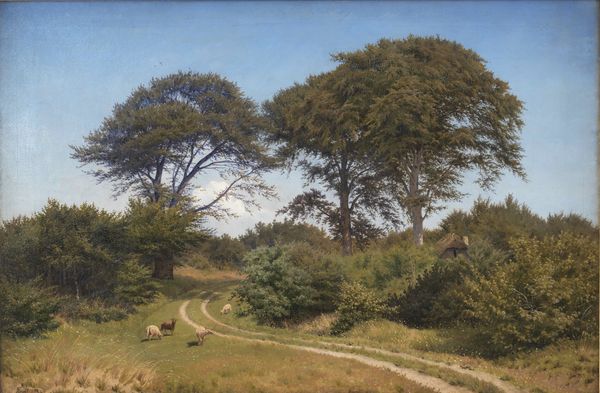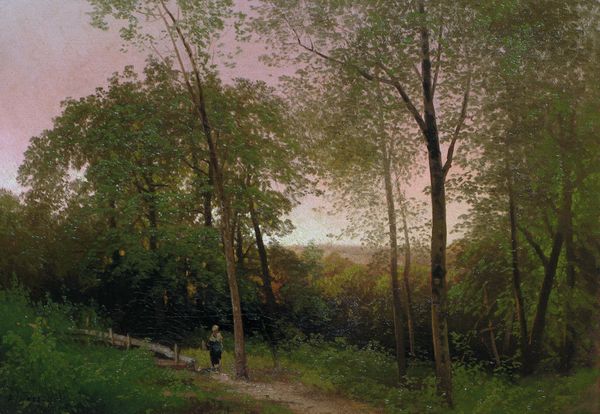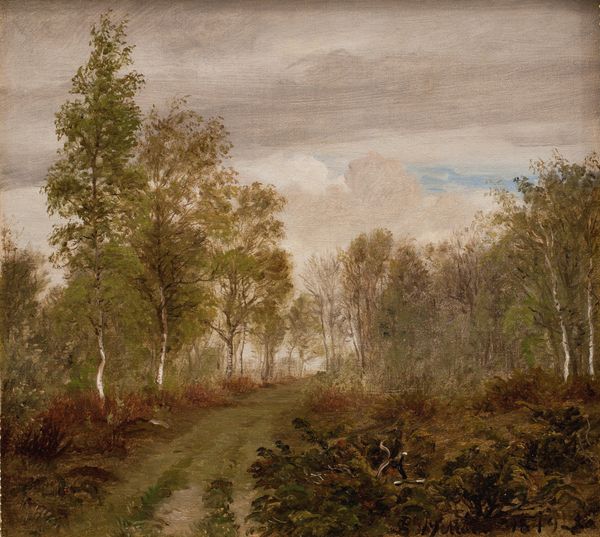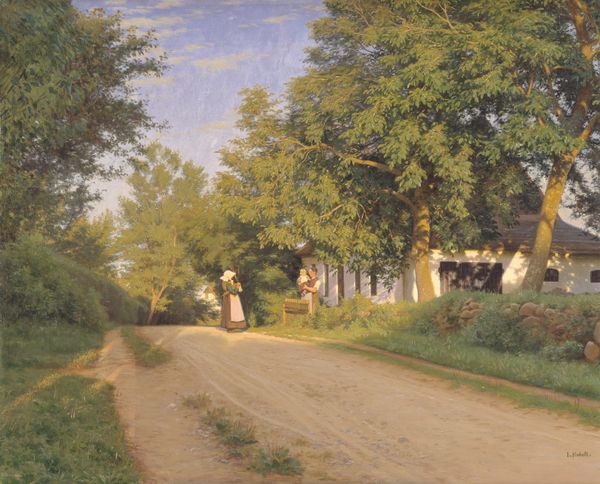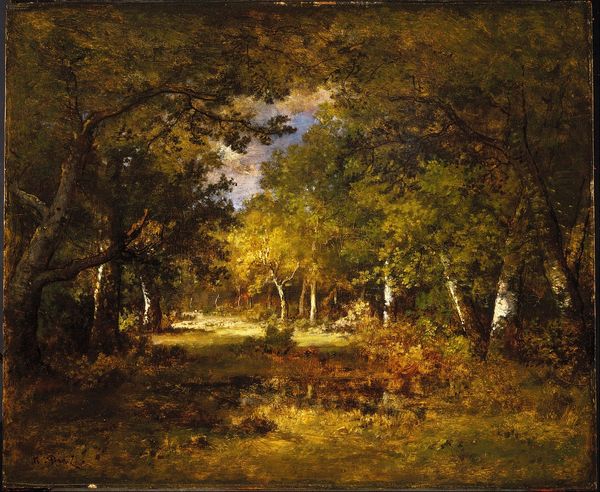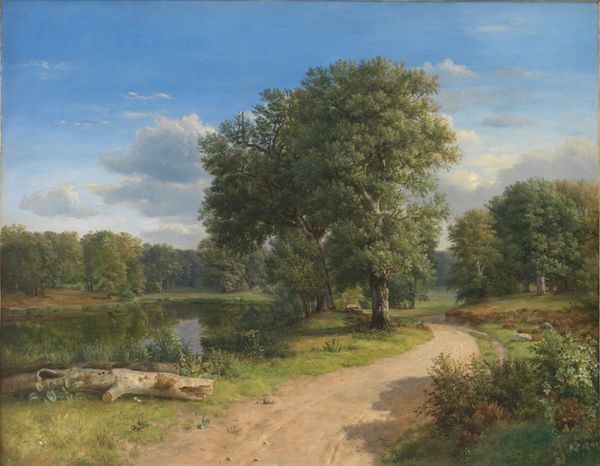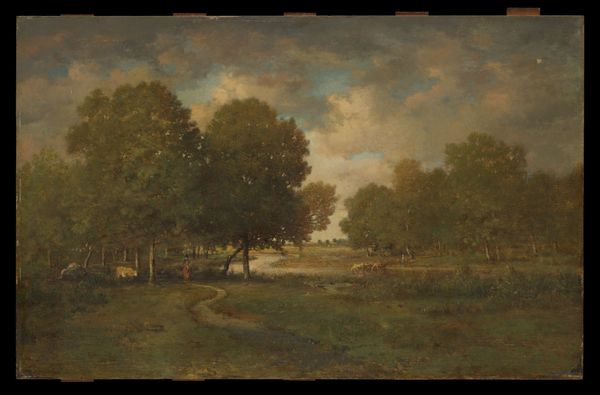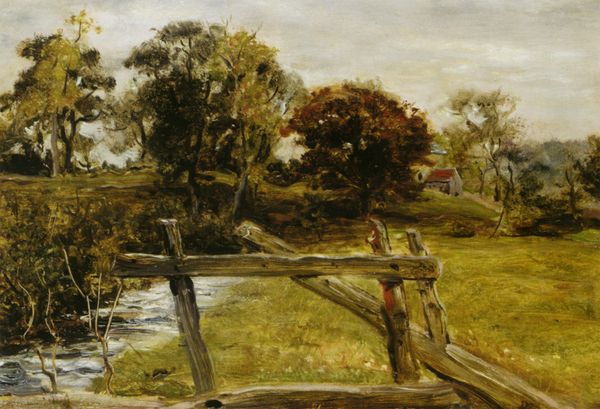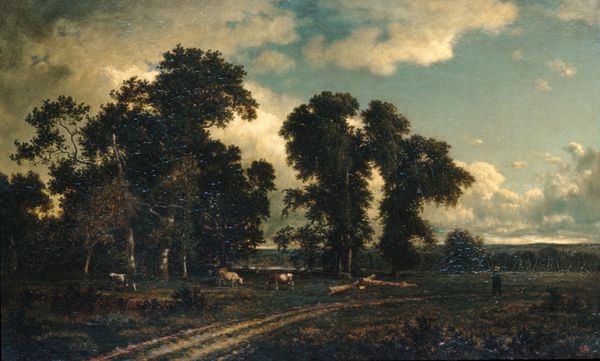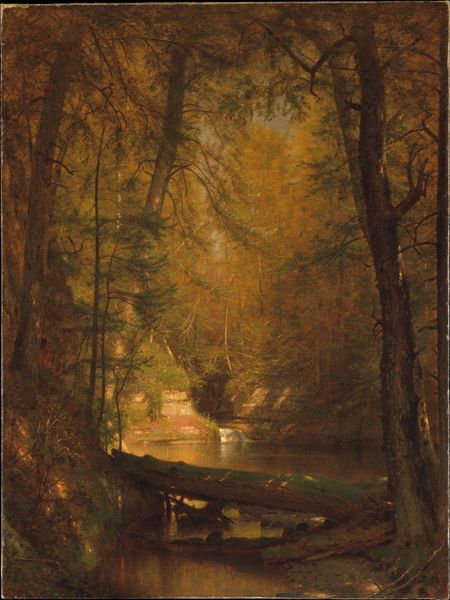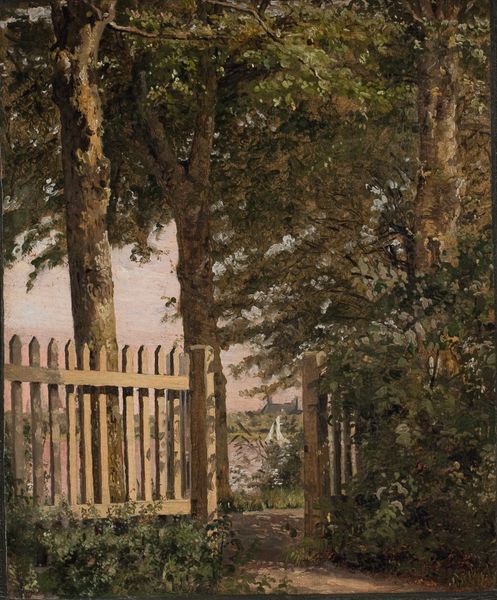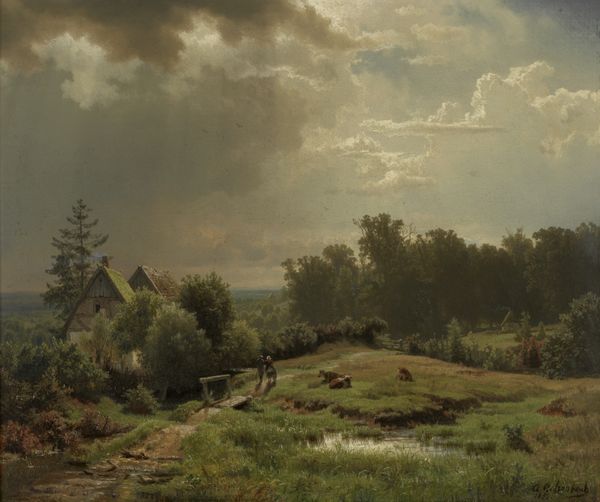
plein-air, oil-paint, wood
#
plein-air
#
oil-paint
#
landscape
#
oil painting
#
romanticism
#
wood
#
realism
Dimensions: 24.5 cm (height) x 37.5 cm (width) (Netto), 37.1 cm (height) x 50.5 cm (width) x 4.9 cm (depth) (Brutto)
Curator: There's something so utterly tranquil about this scene; it exudes a quiet, almost melancholy peace. Editor: Yes, a very serene composition. We are looking at Dankvart Dreyer's "Bridge over a Stream in Assens, Funen," an oil-on-wood panel completed around 1842. I’m immediately drawn to the wood itself—can you feel the rough texture beneath the paint? It emphasizes the labor involved in creating a convincing landscape. Curator: Indeed. The bridge is central to the narrative here; it implies a crossing, a passage from one state to another, or perhaps a metaphor for the transition from youth to maturity. Note how the path behind the bridge leads us away to who knows where. Editor: And it is a pedestrian, quite humble little bridge. Look closely, you can almost see the wood grain, a connection to the physical labor required. Dreyer's decision to paint 'en plein air' also reveals a social context. These realist and romantic landscapes become popular as urbanization drives longing for nature. Curator: Absolutely, it mirrors the Romantic ideals, capturing a feeling more than precise detail. See the dappled sunlight breaking through the trees. It is almost dreamlike. Consider what the flowering shrub may mean to the locals, if this signifies a safe location or some sort of warning to travelers! Editor: I wonder about that very question - Was the wooden panel sourced locally? Who milled the wood and constructed the support for the paint? What relationship did Dreyer, who studied at the Royal Danish Academy, have with those laborers who were not schooled formally as he was? Curator: I agree there’s an undercurrent of complexity beneath its deceptively simple surface, but perhaps that’s its true power; the way it uses universal visual concepts to create specific cultural relevance. Editor: Absolutely. It prompts one to appreciate not only the aesthetic value but the human processes and material contexts involved in its creation. A bridge indeed between idyllic illusion and earthly reality. Curator: It makes you consider what images the common person was absorbing, their place within it. Thank you for sharing that insightful perspective! Editor: The pleasure was all mine! Now I am off to inspect the underpainting...
Comments
No comments
Be the first to comment and join the conversation on the ultimate creative platform.
